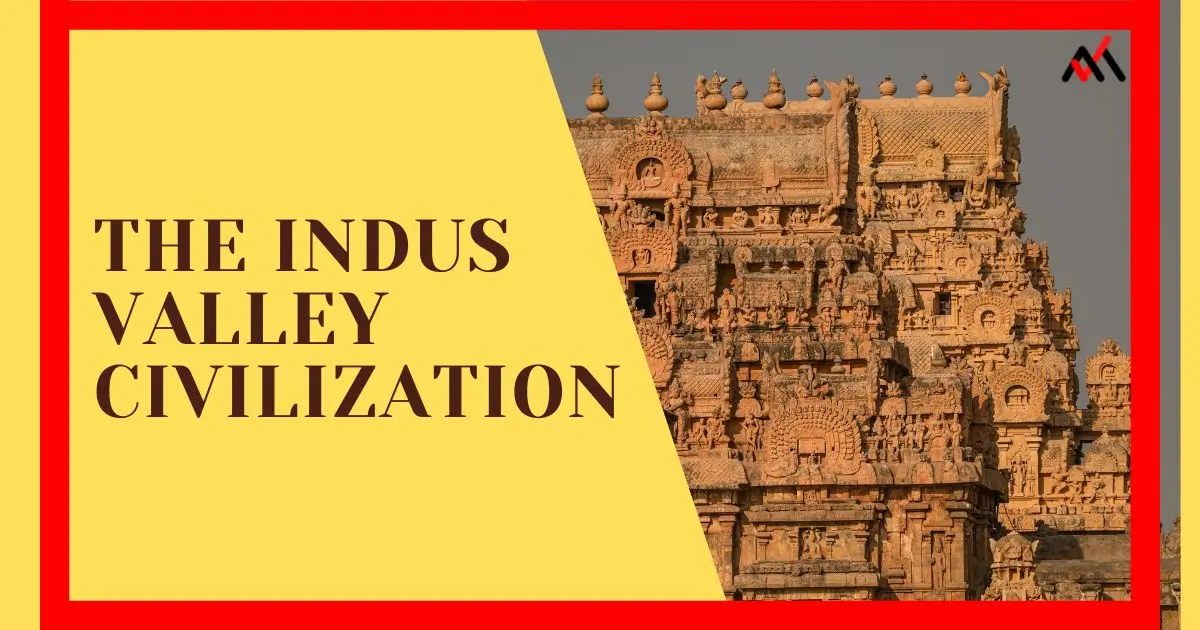The Indus Valley Civilization, also known as the Harappan Civilization, was a remarkable ancient society that flourished during its early years from 3300 to 1300 BCE and reached its mature period from 2600 to 1900 BCE.
Situated along the Indus River, its territory spanned from present-day northeast Afghanistan to Pakistan and northwest India. In this article, we will take a chronological journey through the various phases of this intriguing civilization, from its pre-Harappan origins to its enigmatic decline.
The Indus Valley Civilization, often referred to as one of the most intriguing ancient societies in the world, has fascinated historians, archaeologists, and enthusiasts for centuries. In this comprehensive article, we will delve into the various aspects of this enigmatic civilization, covering its inception, key discoveries, architectural marvels, trade networks, unique artifacts, theories about its decline, and more.
Time Period
1. Pre-Harappan (c. 7000 – c. 5500 BCE): The Neolithic period, exemplified by sites like Mehrgarh, marked the civilization’s early beginnings. During this era, agricultural practices developed, including the domestication of plants and animals, as well as the production of tools and ceramics.
2. Early Harappan (c. 5500 – 2800 BCE): This period witnessed the establishment of extensive trade networks with regions such as Egypt, Mesopotamia, and possibly China. Communities living in small villages constructed ports, docks, and warehouses near waterways.
3. Mature Harappan (c. 2800 – c. 1900 BCE): The zenith of the Indus Valley Civilization was marked by the construction of great cities and widespread urbanization. Cities like Harappa and Mohenjo-Daro flourished around 2600 BCE, and this urban development continued with the construction of hundreds of other cities throughout the region. Cities like Ganeriwala, Lothal, and Dholavira followed similar architectural models.
4. Late Harappan (c. 1900 – c. 1500 BCE): The civilization faced a decline during this period, coinciding with a wave of migration by the Aryan people from the north, possibly the Iranian Plateau. Physical evidence suggests that climate change, including flooding, drought, and famine, may have contributed to the decline. The loss of trade relations with Egypt and Mesopotamia was also a significant factor.
5. Post-Harappan (c. 1500 – c. 600 BCE): During this phase, the cities of the Indus Valley Civilization were abandoned, and the population migrated southward. By the time Cyrus II (the Great) invaded India in 530 BCE, civilization had already fallen. This period marked a transformation in the region’s history as new cultures and civilizations began to emerge.
Significant Topics
- The Birth and Naming: Sir John Marshall’s pivotal role in recognizing and naming the Indus Valley Civilization, once known as the Harappan Civilization, marks the beginning of our journey into its history.
- Early Mound Mentions: Charles Mason’s early mention of the Harappan mounds in 1826 laid the groundwork for future explorations, although their significance remained undiscovered for decades.
- Cunningham’s Oversight: Surprisingly, the Governor General of India, Lord Cunningham, initially failed to grasp the significance of the Harappan mounds.
- Scholarly Contributions: J.F. Fleet’s work in the Royal Asiatic Society played a crucial role in documenting the civilization’s facets.
- Rakhaldas Banerjee’s Trailblazing Visit: Rakhaldas Banerjee’s pioneering visit to Mohenjodaro marked a turning point in our understanding of this ancient civilization.
- Bronze Age Splendor: The Indus Valley Civilization thrived during the Bronze Age, showcasing advanced metallurgy and craftsmanship.
- Architectural Wonders: Annagar’s grandeur in Mohenjodaro and the importance of the Bath (Snanagara) highlight the civilization’s architectural achievements.
- Sprawling Civilization: Approximately 350 sites discovered so far underscore the vast extent of the Indus Valley Civilization.
- Dating the Civilization: John Marshall’s contributions to dating the civilization and Dharampal Aggarwal’s pioneering use of carbon dating are pivotal in understanding its timeline.
- Geographical Expanse: Spanning 1400 km from east to west and 1600 km from north to south, the civilization’s geographical reach is astonishing.
- Urban Centers: Seven sites within the Indus Civilization can be classified as cities, revealing the complexity of its society.
- Trade and Ports: Lothal and Sutkotda served as critical ports facilitating extensive trade networks, making the civilization a global player.
- Unique Discoveries: Kalibanga, with its oval graves, pierced child skulls, and wooden drains, stands out as a site of unique discoveries.
- Seals and Symbols: The Peepal tree and horned animals featured prominently on seals, shedding light on religious and cultural aspects.
- Mini Harappas: S.R. Rao’s discovery of Lothal, known as “Mini Harappa,” enriched our knowledge with valuable artifacts, including a horse statue.
- Dholavira’s Legacy: Dholavira’s advanced water management systems, a pond, and a stadium showcase its unique contributions.
- Artifacts and Curiosities: From a bronze Taurus statue in Kalibanga to a copper hairpin and fire pits in Mohenjodaro, these artifacts provide a glimpse into daily life.
- Decline and Theories: While the exact reasons for the civilization’s decline remain debated, scholars like Gordon Childe suggested a link to the Aryan invasion.
- Agricultural Prowess: The civilization’s mastery of agriculture, including the cultivation of nine different crops, highlights their self-sufficiency.
In conclusion, the Indus Valley Civilization, with its vast cities, advanced architecture, and intricate trade networks, is a testament to human ingenuity and organization in ancient times.
As we continue to unravel its mysteries and expand our knowledge, this civilization remains a treasure trove of insights into our shared human history, serving as a reminder of the complexity and resilience of our ancestors.


